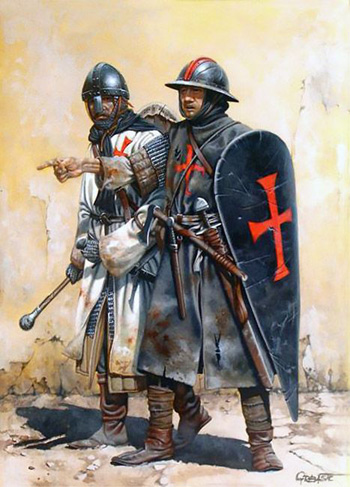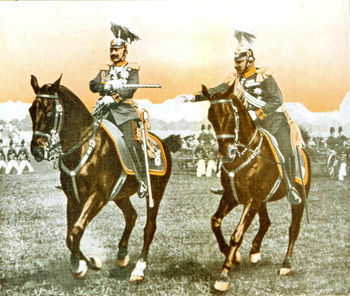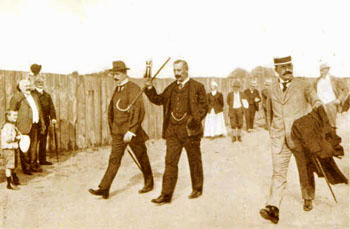The Habit and the Monk
Note: Prof. Plinio wrote this article in 1956 when some of the clergy were already beginning to adopt looser habits of dress. What would he say now, after Vatican II opened the Church to the modern world, when Bishops, priests and religious rushed to abandon their cassocks and habits? One could apply the same principle in secular life to men who abandoned the clothing that characterize their higher functions to adopt egalitarian casual dress.The lack of understanding about the use of the cassock for priests and religious seems to be accentuated in our days. The wisdom of the Holy Church, however, does not fail. And her preference for the cassock is inescapable.
Does that sound like an unimportant matter? Aquila non capit muscas [The eagle doesn't catch flies]. The Church is not concerned about trifles. And if she takes a stand in the face of the question, it is because it is neither an idle nor empty question.

The uniforms of the chivalric orders - e.g. the Knight Templar and his sergeant above- express their spirit
For this reason, in all times and places social customs have established certain apparel as characteristic of professions or states of life that demand a particular conformation of spirit. It has always been rightly understood that professional attire helps a man to fully realize his mentality. For a soldier who dislikes the uniform, a judge who hates the toga, augurs nothing for the good. On the contrary, how could one deny respect to the cleric who loves his cassock and is proud of it? If an army suppressed the use of the uniform, wouldn't it suffer a great blow to its spirit?
To say, therefore, that the habit does not make the monk or the uniform does not make the hero, both is and is not true. In fact, man does not become an authentic monk or a soldier just by adopting the apparel proper to each state. But, a monastic habit makes it easier for a man of good will to become a good monk. And the same can be said of the military uniform.
In order not to offend anyone, we will abstain from presenting very recent examples. Instead we will look at an historical figure, which has already begun to disperse in the mists of a remote past. He is William II, the King of Prussia, the German Emperor or the Kaiser, in the home language of the few Brazilians who still know about him.

Kaiser William II in parade uniform
Here he is in a field parade, transmitting the command baton to a high official. Splendidly uniformed, mounted with a naturalness filled with grace on his steed, the Emperor is visibly in his element, in a situation that unfolds his whole personality with all assuredness, amplitude and brilliance. His face, bearing and gesture manifest that military passion which, the more it is externalized, the more it is affirmed.
On the contrary, in civilian dress (below, center figure with cane) one could say that he is not even the same man. His personality seems faded and his attitude forced. His military qualities still appear enough to contrast with his dress. If the Kaiser and all his troops had to wear civilian suits like this, would the German army be the same?
Obviously not. The German army would not have been what it was. Because, even if the uniform does not make the good soldier, it greatly helps the military to adopt the spirit of its class...
And, why does this same principle not apply, mutatis mutandis, to the Clergy?

The Kaiser in civilian apparel
